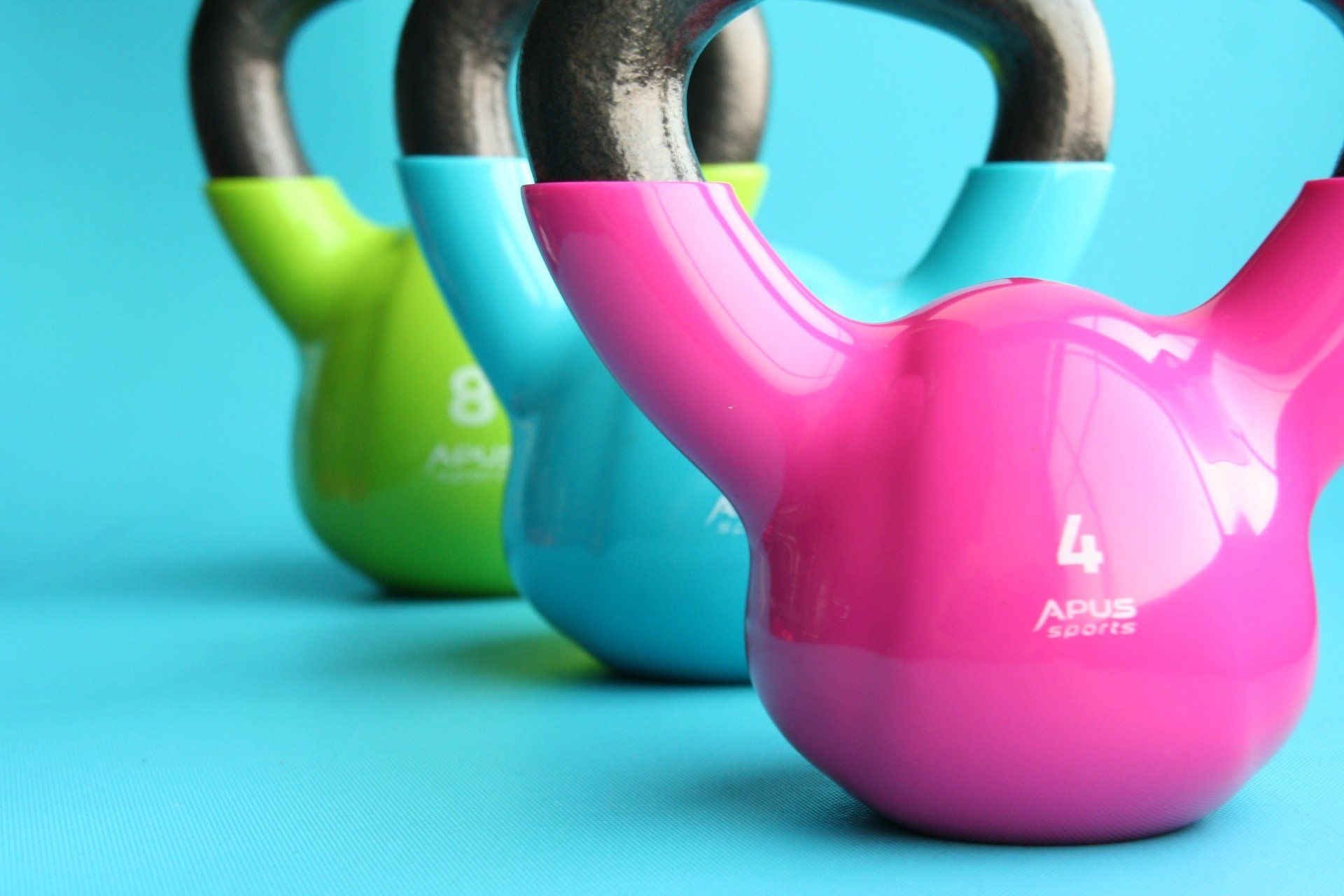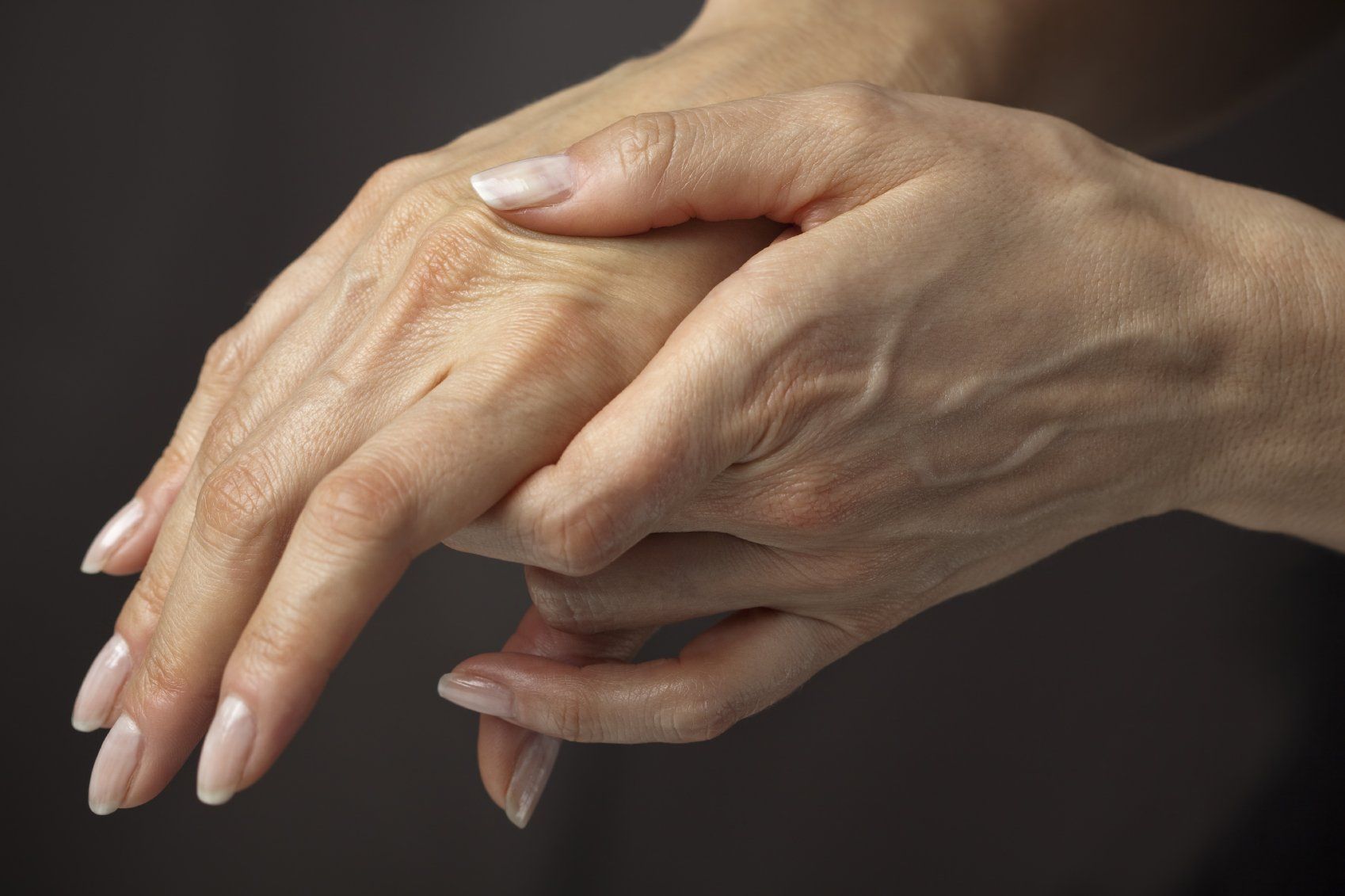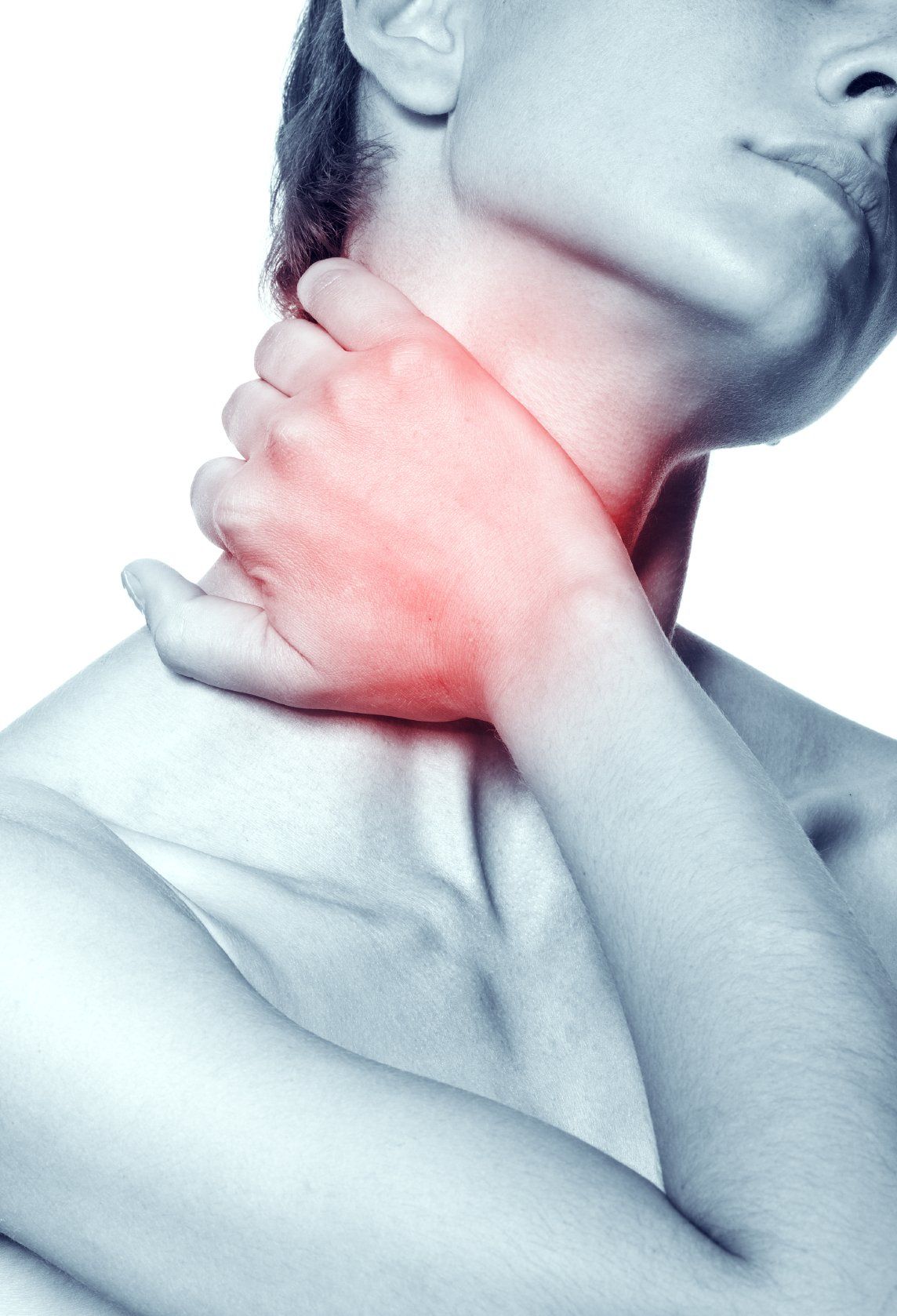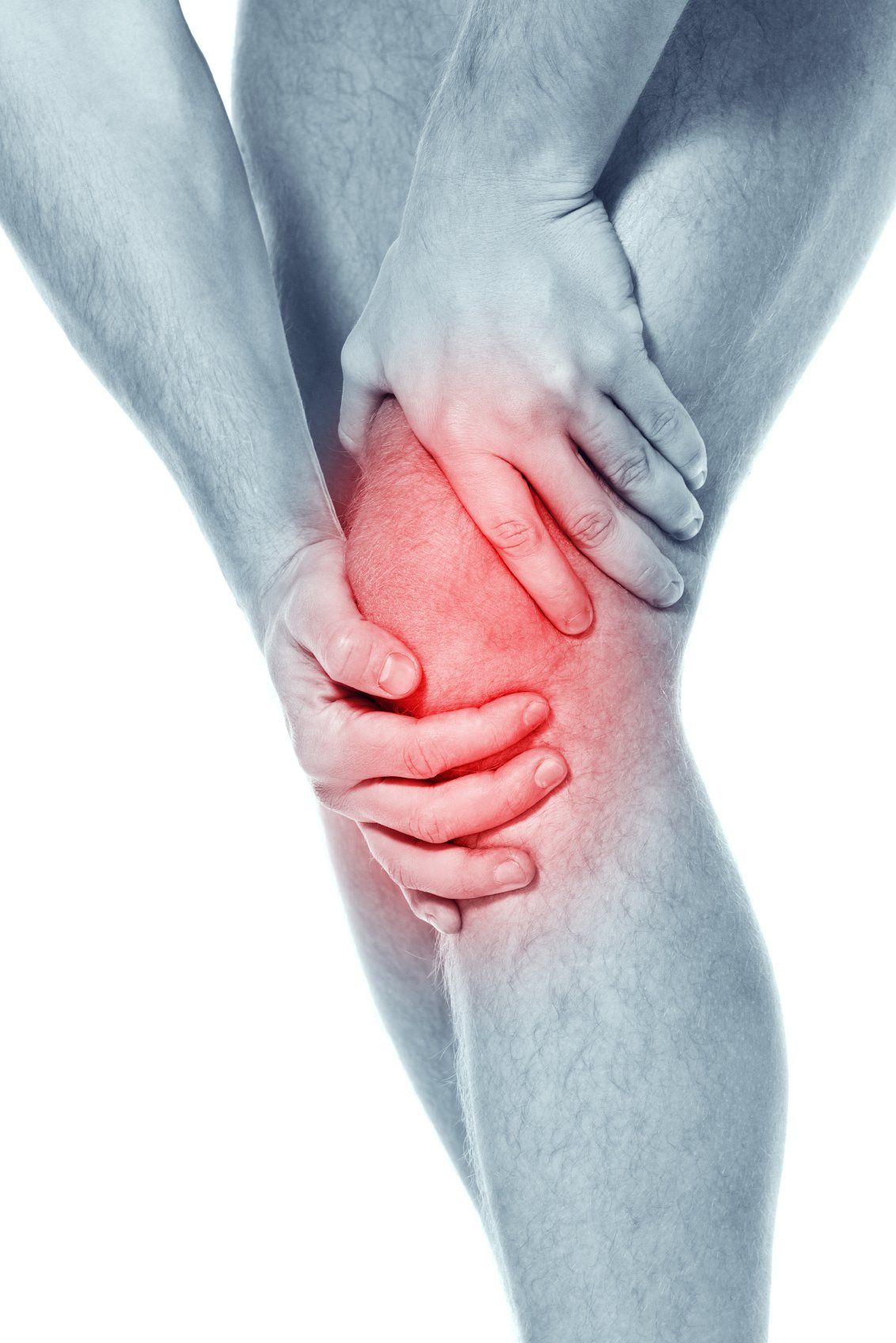Physio-pedia has fantastic illustrations and anatomical breakdown of the knee joint. It is a hinge joint made up of a synovial joint capsule coupled by tendons (that connect the knee bones to the leg muscles) and ligaments (that join the knee bones and provide stability to the knee).
Knee Pain - a topic overview and general discussion
The knee joint’s purpose is to join the bones of the lower leg (the Tibia (shin bone) and fibula) with the Femur (thigh bone). It has the largest articulating surface of any joint in our bodies. This connection enables us to partake in activities such as standing, walking, and running. As a result of the tremendous and variable pressure/force this apparatus takes on - it is particularly susceptible to injury. Let's take a deep dive into some of the common ailments of our knees.
Knee pain can broadly be broken down into 2 encompassing categories - Acute pain (typically less than 8 weeks) and Chronic pain (typically greater than 12 weeks). The knee joint has classically been susceptible to many acute injuries from trauma ranging from bruises to ligament strains to more severe structural damage such as a basketball player tearing an ACL ligament. Chronic pain is likely due to the long term stress/shear force placed on the knee - studies have estimated that chronic pain at the knee
affects approximately 25 percent of adults . Sadly - By 2025, the
prevalence of knee OA is expected to increase by 40% , largely due to an aging population and the obesity epidemic.
Risk Factors for Developing Knee pain include:
- Past trauma/injury - past knee injury increases risk for chronic knee issues/pain as individuals age
- Overweight/Obese - increases pressure on knee joints which can increase the breakdown of cartilage and subsequent arthropathy of the knee
- Overuse - repetitive stress on the knees from jogging or basketball or certain occupations can increase the risks for joint degradation/cartilage erosion
- Muscle weakness/stiffness - A lack of support muscle strength and flexibility can increase the risk of knee injuries. Strong muscles help to stabilize and protect your joints, and muscle flexibility can help you achieve full range of motion.
Symptoms of knee pain include:
General Aches/Pains locally to the damaged region
Muscle weakness
Impaired Mobility
Inability to straighten the knee
Stability issues/falls
Causes of knee pain include:
Degenerative Joint Disease - Osteoarthritis usually due to combination of aging and wear/tear is the most likely etiology of chronic knee pain
Fractures - Bones of the knee/kneecap can break due to trauma especially if osteoporosis (weakening of the bony structure) is present
Meniscus damage - sheer stress can tear the meniscus (a cartilage based structure that acts as a shock absorber between the thighbone and shinbone)
Ligament Strain or tear- tissue injury typically as a result of awkward movement or shear stress
Bursitis of the knee - the bursae can get inflamed and painful (it is a small fluid filled sac that cushions the outside of the knee joint and allows ligaments and tendons to glide smoothly over the joint)
Patellar Tendinitis - this tendon attaches the quadriceps muscle on the front of the thigh to the shinbone and can get inflamed/damaged (particularly in heavy use/stress via running/cycling/skiing)
Immune mediated Arthropathy - such as Rheumatoid Arthritis of the knee (and many other joints of the body can be affected by RA) - a form of arthritis that involves the body's own immune system attacking its own joints. WebMD provided a more detailed overview of RA on the knee
Kneecap damage / dislocation - the patella (bone that covers the front of the knee) can slip out of place
Iliotibial Band Syndrome - tough band of tissue that extends from the lateral aspect of the hip to the lateral aspect of the knee. It can tighten typically from repetitive use (like distance running or cycling) and can apply pressure on the outer portion of the femur
Gout - can have uric acid crystal deposition and subsequent inflammation and tenderness of the knee joint (not as common of a gout joint as the toe)
Septic Arthritis - a typical bacterial infection of the knee joint leading to inflammation/tenderness and even systemic symptoms such as fever/chills
Therapy options for Knee Pain
Acute Knee Pain ( more information from Heathline here ):
1) Associated with high force trauma (motor vehicle crash or fall from height)
-Likely need acute evaluation (such as Emergency Room) with Xray to ensure no fracture and a potential MRI to assess for more intricate structural damage
2) Associated with Low force trauma
- Likely need non emergent but formal evaluation to assess for structural damage and may need imaging to assess structure (such as an MRI)
If no structural issue is noted on examination or imaging - the good news is most acute knee pain issues will improved with a combination of:
Rest
Anti inflammatory medications and/or muscle relaxants
Time (usually in 1-2 weeks from initial presentation/injury to slightly longer if it is a wear/tear injury such as patellar tendinitis or Iliotibial Band Syndrome)
Unfortunately - as WebMd notes here - data has shown that acute structural knee injuries does significantly increase the risk for chronic knee issues as one ages.
Chronic Back Pain Therapy options consist of usually an algorithm based treatment plan to help alleviate/maintain symptoms (a good reference here from the Mayo Clinic ):
1) Nondrug/Non surgical Therapies:
a. Physical therapy/Exercise - strengthen/stabilize muscles around the affected joint/area
b. Weight Loss – Alleviate pressure and shear force on the knee joint
2) Medications - used to control inflammation/pain:
a. NSAIDs – Non Steroidal Anti-inflammatory Drugs – one of the most commonly used medications in the world. Advil / Aspirin / Motrin / Aleve / Naproxen / Ibuprofen / Motrin / Diclofenac are all examples of NSAIDs. The issue is they are to be Cautioned/Avoided in individuals with multiple medical issues such as Chronic Kidney Diseae / Congestive Heart Failure / Gastritis or Stomach ulcers / Resistant hypertension.
b. Acetaminophen – commonly recommended when physicians ask patients to avoid NSAIDs. Ex: Tylenol Arthritis – the problem is multiple past studies (and decades of our clinical patient encounters) have shown minimal (if any) anti-inflammatory effectiveness
c. Opioids – Controlled narcotics pain medication that is classified as an unfortunate epidemic in the USA. These medications bind to opioid receptors in the brain/spinal cord and blunt to pain signals. The issue is they have dangerous side effect profile (can be fatal) and also patients develop tolerance and are in need of larger dosages which can lead to a potential addiction or overdose
3) Surgical Options
a. Joint injection – commonly performed by orthopedic surgeons or rheumatologists – typically are either a corticosteroid injection to suppress inflammation locally or a hyaluronic acid injection to provide some degree of joint cushion. The issue is both are short term solutions that typically lead to recurrent issues
B. Platelet-rich Plasma (PRP) - commonly performed by a sports medicine or orthopedic doctor - PRP contains many growth factors that may potentially reduce inflammation and promote healing (study data is mixed though on the long term effectiveness though).
b. Joint Surgery – commonly performed by an orthopedic surgeon. Such as a total knee arthroplasty . The issue is these are invasive surgeries that carry risk of anesthesia/cardiac events/infections/blood clots and may be difficult especially in the elderly population
Above is a detailed overview of this complex but sadly common issue that is rising across our country and in our world. As a practicing Nephrologist (Kidney Doctor) - I generally never get consulted to manage osteoarthritis but end up playing a large role in the symptom control of my patients.
The most common reason for a patient to see a Nephrologist is for a diagnosis of chronic kidney disease . Our goal is to help slow the progression of this CKD by optimizing risk factors that historically damage kidneys and attempt to avoid progression to a need for renal replacement therapy (dialysis or kidney transplant). Every Nephrologist I know would immediately ask a patient to stop all NSAIDs such as Advil / Motrin / Alleve / Naproxen / Ibuprofen along with several prescription strength NSAIDs such as Diclofenac / Voltaren / Celebrex / Indomethacin / Meloxicam. The only regular recommended alternative is Tylenol (Acetaminophen) Extra Strength or Arthritis at recommended dosages to control aches/pains/inflammation. The issue: Acetaminophen has weak data on arthritis/inflammation control
More often than not our patients come back to us saying they are not achieving adequate management without NSAIDs. Opioids are almost never the right answer for osteoarthritis related pain management (they do not suppress joint inflammation and have a very unfavorable risk profile). Injections/surgeries are invasive and have their drawbacks especially in patients with more advanced chronic kidney disease. We had to research this field to find a safe and effective alternative for our patients!
Several herbs have been used in holistic medicine for generations for inflammation control such as curcumin, capsaicin extracts, ginger, willow bark, cloves, fenugreek, or nigella sativa. There is a multitude of bench data as well as clinical trial data (including several randomized control trials) for several of these herbs/extracts. We began looking into herbal/holistic substances and we parsed basic science/bench as well as clinical research databases. Our ingredients have shown to suppress the inflammatory cascade with the caveat of no known issues with kidney function / Sodium retention or swelling / Blood Pressure elevation / stomach lining erosion that plague chronic NSAID use. In 2014 after some testing and adjustments - we solidified a powder based regimen and would at times suggest patients seeking alternative/additional relief try it. We did not commercially sell it but would just suggest individuals obtain and try the ingredients on their own.
The response was tremendous and more often than not this became their go to relief agent. The only consistent suggestion (and complaint) was the taste of the powders and the need for a tablet to ease delivery/use. We adjusted the extract ratios/concentrations and were able to manufacture (made in the USA at an FDA registered and GMP certified facility) a coated (should be tasteless) tablet also scored to decrease size to help ease use. The feedback and reviews have
been phenomenal (click here to see our Amazon reviews). We sincerely hope Organic Arthritis assists you in staying active and on your path to healthy and meaningful living. Thanks for taking time out to join me on this journey! Thank you for sharing your time with me on this blog! Thank you for sharing your time with me on this blog!











